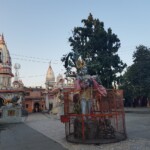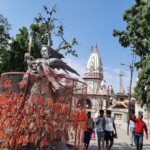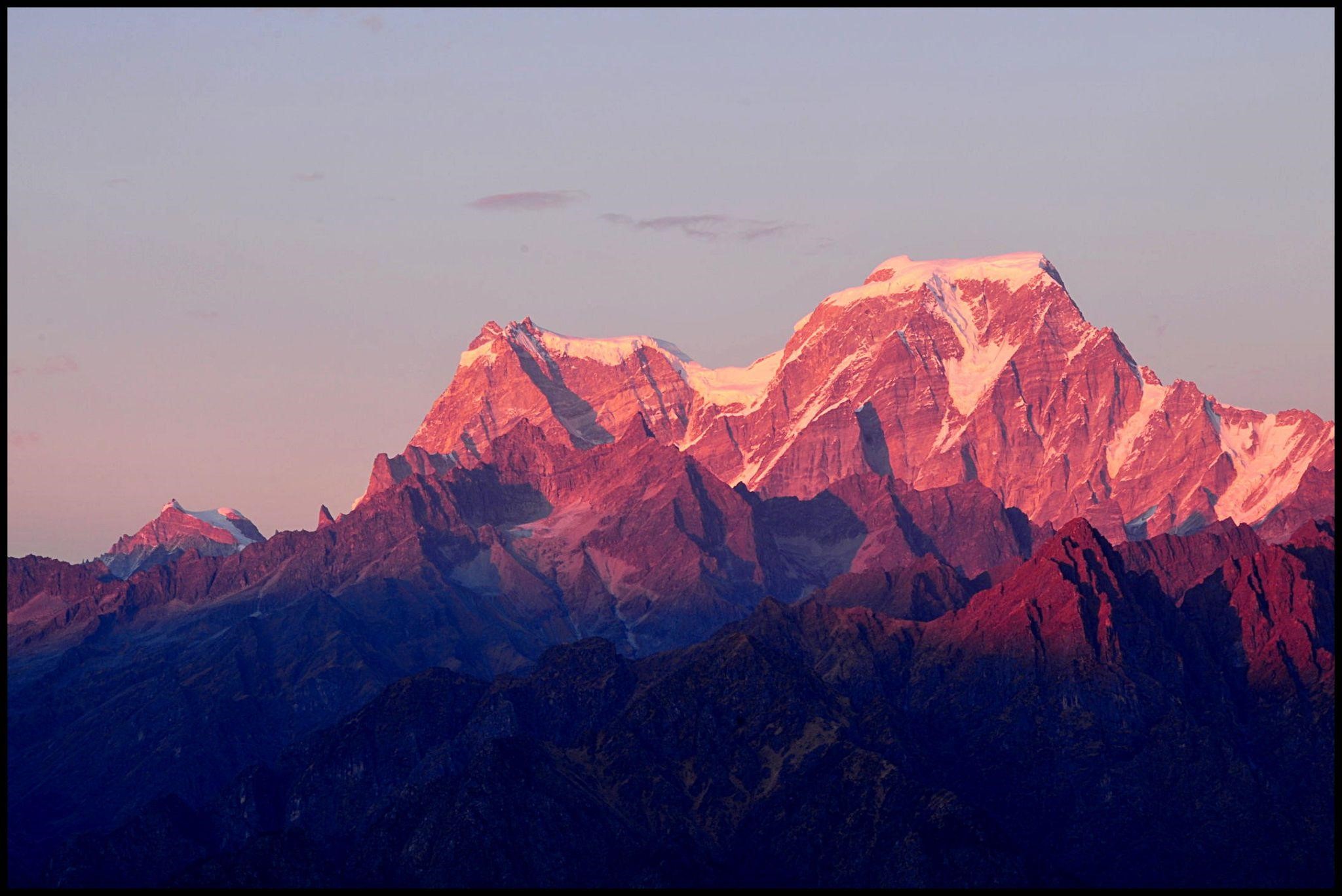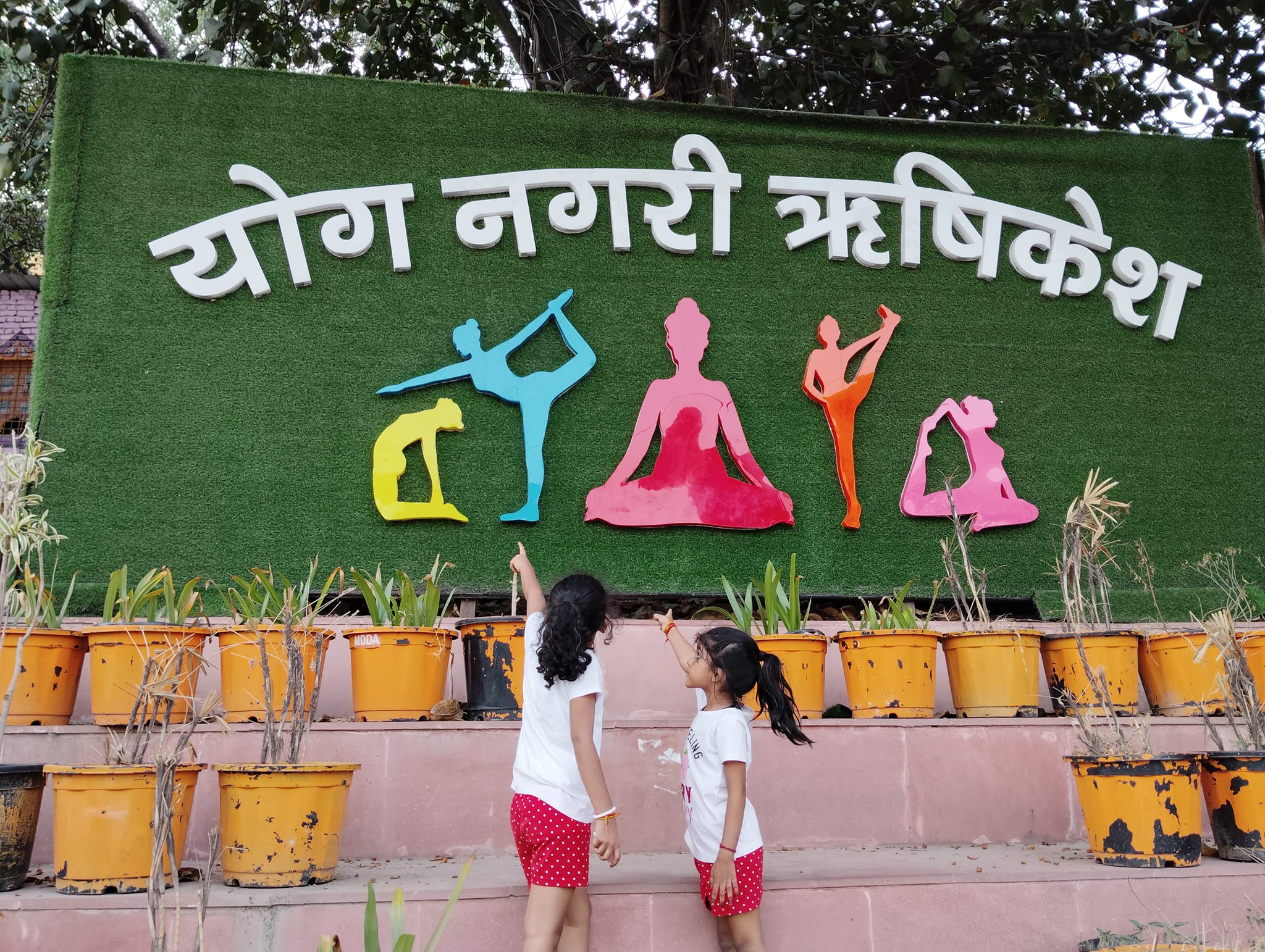
Haridwar, a city nestled along the banks of the holy Ganges, is home to numerous temples, each with its unique history and spiritual significance. Among these, the Daksha Mahadev Temple stands out as a symbol of devotion and architectural splendor. Let’s embark on a journey to explore the timings, history, pooja, and aarti at this sacred place.
Haridwar, renowned as a world-famous pilgrimage center and the gateway to the devbhoomi (the land of the gods) in Uttarakhand, stands as a city adorned with temples. Countless places within its bounds carry the sacred imprints of various deities, sanctified by their divine activities, and subsequently honored with the construction of temples to commemorate their presence. Among the city’s notable landmarks is the Daksheshwar Mahadev Temple in Kankhal, situated approximately 6 kilometres from Har-Ki-Pauri, marking the southern periphery of Haridwar.
The quaint town of Kankhal, in close proximity to Haridwar, hosts the Daksha Prajapati Mandir, also known as the Daksha Mahadev Temple, dedicated to Lord Shiva. This temple not only stands as a place of worship but also serves as a testament to the rich cultural and religious heritage deeply embedded in the history of Haridwar.
History of Daksha Mahadev Temple, Haridwar
The genesis of the Daksha Mahadev Temple lies in the mythological narratives of the Shiv Purana, a sacred Hindu text. According to the legend, Brahma, one of the Hindu trinity, prayed for the birth of Jagdamba or Bhagwati, the supreme shakti. In response, she took birth as Sati, the daughter of Daksha Prajapati, who ruled over Kankhal. Sati, through rigorous tapasya (worship), sought to marry Lord Shiva, ultimately succeeding in gaining His consent.
However, strains developed in the relationship between King Daksh and his son-in-law, Lord Shiva. A significant event occurred when King Daksh organized a grand yajna at Kankhal, inviting all gods, rishis, and munis except Lord Shiva. Sati, learning of the function, convinced Lord Shiva to let her attend. During the yajna, King Daksh insulted Lord Shiva, leading to Sati immolating herself in the ritual fire. In retaliation, Lord Shiva sent Veerbhadra, a formidable warrior, to Kankhal, who beheaded King Daksh.
Upon the pleas of other gods, including Lord Vishnu, Lord Shiva appeared and restored King Daksh to life by placing the head of a male goat on his shoulders. The grieving Lord Shiva wandered across the universe, carrying the lifeless body of Sati. Lord Vishnu, using his sudarshan chakra, severed parts of Sati’s body to relieve Lord Shiva from his deep mourning. These severed parts became revered shakti peeths, and temples were built to honor these sacred spots.
The Daksha Mahadev Temple in Kankhal stands as a testament to this epochal event. Constructed in 1810 by the king of Landhora state, the temple underwent renovation in 1963 under the management of Mahanirvan Akharas Kankhal. The temple, situated on the tranquil bank of a tributary of the Ganga at the foothills of the Shivalik Ranges, consists of the Yajna Kund and a Shiv Linga worshipped by devotees with water offerings.
The temple’s walls vividly depict the story of King Daksh’s yajna and its aftermath. A millennia-old banyan tree, considered sacred, adds to the spiritual ambiance of the temple precincts. Devotees from across the country and abroad visit the temple throughout the year, with a particularly heavy influx during the month of Sayan. On Shivratri, a significant gathering of devotees converges at the temple to seek Lord Shiva’s blessings. According to local priest and astrologer Pradeep, sincere offerings to Lord Shiva at the Daksha Mahadev Temple fulfill devotees’ wishes and bring divine blessings.
Images of Daksha Mahadev Temple, Haridwar
About Daksheswar Mahadev Temple
Daksha Mahadev Temple: A Spiritual Haven in Kankhal, Haridwar
Daksheswara Mahadev, or Daksha Mahadev Temple, stands as a divine sanctuary dedicated to Lord Shiva, nestled in the town of Kankhal, Haridwar, Uttarakhand, India. Named after King Daksha Prajapati, the father of Sati, the first wife of Lord Shiva, this temple holds profound significance in Hindu mythology. King Daksha is one of the fourteen Prajapatis, creator deities responsible for procreation and the guardians of life.
Historical Roots and Architecture
The temple, while not ancient, houses an age-old yajnashala, the site where fire sacrifices (yajnas) are conducted. This sacred space is confirmed to be the location where the original Sati sacrificed herself for her husband, Lord Shiva, who had been insulted by her father. Constructed by Queen Dhankaur in 1810 and later rebuilt in 1962, the Daksha Mahadev Temple attracts Shaivaite devotees, particularly during Maha Shivaratri.
Mythological Significance
Situated approximately 4 kilometers south of Haridwar in Kankhal town, the temple is linked to the mythological tale of King Daksha Prajapati. During a yagna performed by King Daksha, Lord Shiva, his son-in-law, was not invited. Enraged, Sati, Shiva’s wife, immolated herself in the Yagna Kund, now known as Sati Kund. In retaliation, an angered Shiva beheaded King Daksha. Later, in a compassionate gesture, Shiva revived Daksha, replacing his head with that of a goat. The Daksha Temple stands as a commemoration of this transformative incident.
Sacred Sites in Haridwar
The Daksha Temple holds special significance as one of the five sacred places in Haridwar. Legend has it that while grief-stricken Shiva carried the corpse of Sati, her heart and navel fell at the location where the Maya Devi Temple now stands, dating back to the 11th century. The Daksha Temple is a testament to this profound legend and is closely associated with the town’s spiritual landscape.
Spiritual Journey at Daksha Mahadev Temple
In the sanctum of Shri Daksheshwar Temple, devotees encounter the holy Shiva idol in the phallic form, symbolizing the divine cosmic energy. The temple attracts a multitude of tourists in August, known as the holy month of Sawan or the month of Lord Shiva, according to the Hindu calendar. Special rituals mark the celebration of Shivratri, the auspicious day of Shiva and Shakti’s celestial union.
Adjacent to the main temple, pilgrims can explore the Das Mahavidya Temple, dedicated to the Mahavidyas, enhancing the spiritual experience in this sacred precinct. Close by, Daksha Ghat and Nileshwar Mahadev Temple add to the spiritual aura, creating a comprehensive pilgrimage experience for devotees.
Daksha Mahadev Temple, with its rich history, mythological significance, and spiritual ambiance, stands as a beacon of devotion, drawing pilgrims and seekers from far and wide to experience the divine presence of Lord Shiva.
Daksheswara Mahadev Temple Haridwar Entry Fee
- No Entry Fee
Daksheswara (Daksha) Mahadev Temple, Haridwar Timings
| Day | Daksh prajapati Temple Timing |
| Monday | 6:00 am – 7:00 pm |
| Tuesday | 6:00 am – 7:00 pm |
| Wednesday | 6:00 am – 7:00 pm |
| Thursday | 6:00 am – 7:00 pm |
| Friday | 6:00 am – 7:00 pm |
| Saturday | 6:00 am – 7:00 pm |
| Sunday | 6:00 am – 7:00 pm |
Exploring the Serenity Around Daksha Mahadev Temple
1. Ancient Arboreal Wonder
A. Enigmatic Tree at the Yagnashala
Directly across from the yagnashala of the Daksha Mahadev Temple stands an ancient arboreal marvel. This extraordinary tree is not just one but a fusion of three distinct trees, their roots interwoven so intricately that they appear inseparable. The age-old roots create a mesmerizing spectacle, challenging the observer to distinguish them as individual entities.
2. Spiritual Encounters
A. Das Mahavidya Temple
Adjacent to the main temple, the Das Mahavidya Temple awaits exploration. Dedicated to the Mahavidyas, divine embodiments of cosmic wisdom, this sacred space amplifies the spiritual ambiance surrounding Daksha Mahadev Temple.
As devotees traverse the temple grounds, they are greeted by the serene presence of the Mahavidya Temple, adding a layer of profound spiritual significance to the pilgrimage experience.
3. Immersed in Tranquility
A. Tranquil Spaces for Contemplation
Beyond the bustling rituals and vibrant energies of Daksha Mahadev Temple, there are pockets of tranquility that invite contemplation. Seekers can find solace amidst the ancient tree and the spiritual aura of the Das Mahavidya Temple, creating moments of quiet reflection.
4. Architectural Marvels
A. Admiring the Temple Complex
While exploring the precincts of Daksha Mahadev Temple, devotees have the opportunity to marvel at the architectural splendor. The main temple and the Das Mahavidya Temple showcase intricate details, reflecting the craftsmanship and devotion that went into their construction.
5. Pilgrimage Beyond Rituals
A. Holistic Pilgrimage Experience
Daksha Mahadev Temple, with its age-old tree, the Das Mahavidya Temple, and the tranquil spaces, offers more than a ritualistic pilgrimage. It provides a holistic experience, where the sacred and serene converge to create an atmosphere conducive to spiritual introspection.
6. Nature’s Embrace
A. Harmony with Nature
The ancient tree, with its intertwined roots, symbolizes a harmonious connection with nature. As pilgrims traverse the temple grounds, they can witness this natural marvel, fostering a sense of unity with the environment.
The surroundings of Daksha Mahadev Temple extend beyond the divine rituals, incorporating elements of nature and architectural brilliance. Pilgrims are invited not only to partake in religious practices but also to immerse themselves in the tranquility and spiritual richness that permeate these sacred grounds.
Things to do at Daksha Mahadev Temple
Here’s a summary of things to do at Daksha Mahadev Temple:
- Visit the Holy Shiva Idol: Devotees can visit the temple to see the sacred Shiva idol installed in phallic form. The idol holds great religious significance, and visitors often engage in prayers and worship.
- Attend in August (Sawan): The temple attracts a large number of tourists and devotees in the month of August, known as Sawan. This month is considered holy in the Hindu calendar, especially dedicated to Lord Shiva. Many pilgrims undertake special rituals and visit temples during this auspicious time.
- Participate in Sawan Celebrations: August, being the holy month of Sawan, witnesses special celebrations and rituals at the temple. Pilgrims may participate in prayer sessions, religious processions, and other events that commemorate Lord Shiva.
- Shivratri Celebrations: The temple hosts special rituals and celebrations on Shivratri, which marks the marriage day of Shiva and Shakti. Devotees may engage in prayers, attend religious ceremonies, and join the festivities that take place during this significant day in the Hindu calendar.
- Experience the Spiritual Atmosphere: Beyond specific events, visitors can immerse themselves in the spiritual atmosphere of the temple. The serene surroundings and religious ambience provide a peaceful space for meditation and reflection.
- Learn about Mythological Significance: Take the opportunity to learn about the mythological stories and significance associated with Daksha Mahadev Temple. Temples often have rich histories and legends that add depth to the spiritual experience.
- Witness Architectural Beauty: Appreciate the architectural beauty of the temple. Hindu temples are often adorned with intricate carvings and designs, and Daksha Mahadev Temple may have unique features that showcase traditional craftsmanship.
Before planning a visit, it’s advisable to check the specific timings, any entry requirements, and the schedule of events, as they may vary. Additionally, consulting local authorities or guides can provide more detailed information tailored to your visit.
Places to Visit near Daksha Mahadev Temple
Here are some notable places to visit near Daksha Mahadev Temple:
- Shree Ma Anandamayi Ashram: Located in front of the Daksha Mahadev Temple, the Shree Ma Anandamayi Ashram is a spiritual retreat dedicated to the teachings of Shree Ma Anandamayi. Visitors can explore the ashram’s serene environment, attend spiritual sessions, and learn about the teachings of the revered saint.
- Parad Shivling Temple: The Parad Shivling Temple is dedicated to Lord Shiva, and it houses a shivling made of mercury. This unique material adds significance to the temple. The temple is situated inside the Harihar Ashram in Kankhal, providing devotees with a distinct religious experience.
- Harihar Ashram: The Harihar Ashram, where the Parad Shivling Temple is located, is a place of spiritual significance. Devotees can participate in prayers, meditation sessions, and other spiritual activities within the ashram’s premises.
- Sri Yatra Temple: The Sri Yatra Temple is another religious site near Daksha Mahadev Temple. Devotees can visit this temple to offer prayers and seek blessings. The temple may host special events and ceremonies during auspicious occasions.
- Rudraksha Tree at Maa Anandmayi Ashram: The ashram dedicated to Shree Ma Anandamayi is known for its Rudraksha tree, which serves as a main attraction. Rudraksha beads are considered sacred in Hinduism, and the tree is associated with spiritual significance. Visitors may find the tree intriguing and spiritually enriching.
These nearby attractions provide a diverse range of spiritual experiences, from traditional temple visits to immersive ashram experiences. It’s advisable to check the specific timings, events, and entry requirements for each place before planning a visit. Additionally, local guides or authorities can offer more detailed information about these sites.
How do I reach Daksha Mahadev Temple?
Daksha Mahadev Temple is conveniently located and accessible from various nearby cities.
Here’s how you can reach the temple from different places:
1. From Haridwar Station (5 km):
- The temple is only 5 km away from Haridwar Station. You can hire a local rickshaw or a taxi to reach the temple from the railway station.
2. From Rishikesh (35 km):
- Rishikesh is approximately 35 km away from Daksha Mahadev Temple. You can hire a taxi or take a bus from Rishikesh to reach the temple.
3. From Delhi (210 km):
- If you are travelling from Delhi, you can reach Daksha Mahadev Temple by road. You can either hire a taxi, take a private car, or use bus services that connect Delhi to Haridwar.
4. From Dehradun (55 km):
- Daksha Mahadev Temple is about 55 km from Dehradun. You can hire a taxi or take a bus to reach the temple from Dehradun.
5. From Jolly Grant Airport, Dehradun (30 km):
- The temple is approximately 30 km from Jolly Grant Airport. You can hire a taxi or use other local transportation options to reach the temple from the airport.
6. From Mussoorie (90 km):
- Mussoorie is around 90 km away from Daksha Mahadev Temple. You can hire a taxi or take a bus to reach the temple from Mussoorie.
7. Local Transportation to the Temple:
- Once you reach the vicinity of the temple, you can use local transportation like rickshaws to cover the remaining distance to Daksha Mahadev Temple.
It’s advisable to check the availability and schedule of transportation options based on your starting point. Rickshaws, taxis, and buses are commonly available for local commuting. Always confirm the current transportation options and their timings for a hassle-free journey.







